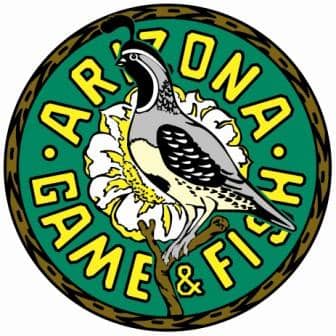Arizona Game and Fish Commission Votes to Oppose Proposal to Create Grand Canyon Watershed National Monument
OutdoorHub 05.13.12

Citing a long list of concerns, the Arizona Game and Fish Commission today (May 11) voted to oppose the proposed Grand Canyon Watershed National Monument, which as envisioned would encompass 1.7 million acres of northern Arizona.
The Game and Fish Commission also adopted a resolution concerning the continuing and cumulative effects that special land use designations have on multiple-use lands, including effects on access, conservation efforts and wildlife-related recreation (see resolution below).
The commission pointed out that the resolution does not preempt future discussions and dialogues, but sets the appropriate stage for them.
The Grand Canyon Watershed National Monument is being proposed by the Grand Canyon Wildlands Council, Center for Biological Diversity and the Wilderness Society.
The proposal encompasses 1.7 million acres of mostly public land spread across five geographical areas: the Kaibab Plateau; Kaibab-Paunsagunt Wildlife Corridor, Kaibab Creek Watershed, House Rock Valley, and the Tusayan Ranger District, south rim headquarters.
The Game and Fish Commission pointed out that the vast majority of lands in question are already public lands currently managed and conserved under multiple use concepts, primarily by the U.S. Forest Service and Bureau of Land Management, although the proposal would also impact State Trust Lands and private holdings as well.
The issue, pointed out various commissioners, is not conserving these lands and associated wildlife habitats – that is already being done very effectively, which has led to the largest un-fragmented block of wildlife habitat in Arizona.
However, the new monument is being proposed to “preserve” and in some cases lock away these lands rather than conserve them, which could impact public access, recreation, grazing, and the ability of the commission to manage wildlife.
“It’s not as if these lands aren’t already being managed and conserved. This is really about changing the status of these lands and adding another layer of federal bureaucracy, which has far ranging implications,” said Commissioner Kurt R. Davis.
An analysis by the Arizona Game and Fish Department showed that monument designation can lead to restrictions on proactive wildlife management including:
- Wildlife population augmentations;
- Wildlife habitat manipulations and enhancements;
- Wildlife water developments;
- Hunting and fishing access.
The monument proposal would also entail voluntary retirement of grazing leasing on the lands. The department analysis points out that the loss of livestock management can cause significant loss of water availability for wildlife, besides negatively impacting the local economy.
“However, through our regional wildlife managers and our Landowner Relations Program we have many cooperative habitat improvement projects with Arizona Strip ranchers that have benefitted wildlife and relationships,” states the department analysis.
Commissioners and the department also expressed concern over the loss of ability to mechanically thin high-risk forests with unnatural densities of small-diameter trees, or the potential to do prescribed burns, thereby exposing these forest habitats to the possibility of catastrophic wild fires in the future.
There is also concern that the monument designation may prompt external pressure to seek a mandatory lead ban, which would jeopardize the success of the Game and Fish Department’s ongoing voluntary non-lead efforts to restore California condor populations.
There are additional concerns that there would become further restrictions on motorized game retrieval.
Commissioners also pointed out that they very much oppose any process that eliminates public participation, especially from those in the communities affected. The process to create yet another national monument in Arizona requires no public input or congressional oversight.

